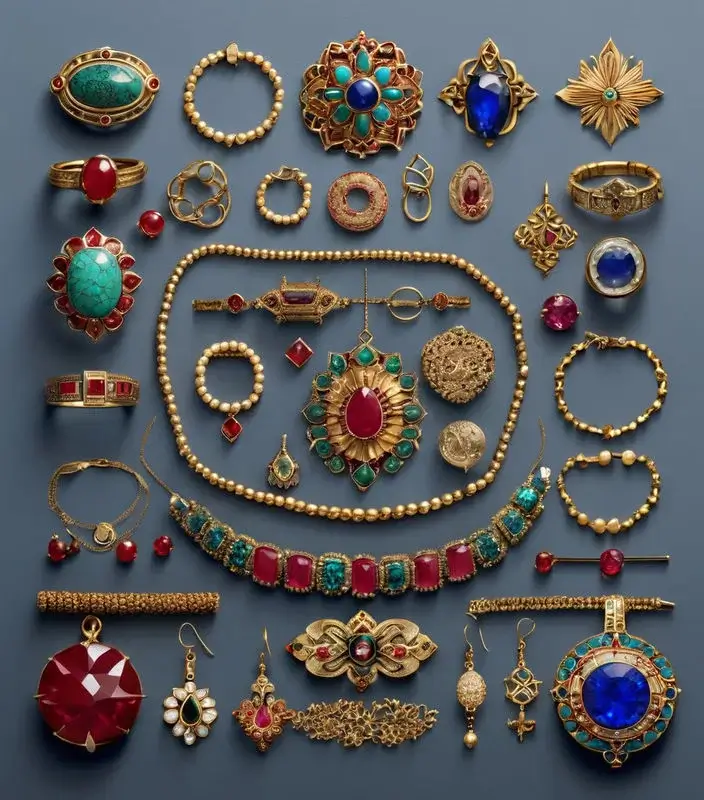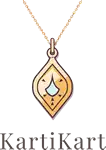Blog
Unveiling the Stories Woven into Cultural Jewelry

Jewelry isn’t just about sparkle and shine; it’s a whisper of history, a symbol of faith, and a silent conversation starter. Around the world, different cultures have imbued their jewelry with rich symbolism, transforming simple adornments into powerful talismans and treasured heirlooms. Let’s delve deeper into some of these fascinating traditions:
China: The Enduring Allure of Jade: For over 7,000 years, jade has held a special place in Chinese hearts. This precious stone, known for its smooth texture and captivating green hues, is more than just beautiful. In Chinese culture, jade symbolizes balance and harmony, representing the perfect union of yin and yang, the two opposing forces believed to govern the universe. Traditionally, jade jewelry was worn by nobility and scholars, but its significance transcended social class. A simple jade pendant could be a cherished family heirloom, passed down through generations, whispering stories of ancestors and strengthening the bonds of family.
India: Mangalsutras and the Strength of Tradition: The mangalsutra, a sacred necklace worn by married Hindu women, is a vibrant symbol of marital bliss and commitment. Traditionally crafted from yellow gold with black beads, the mangalsutra’s design can vary depending on the region. However, its symbolism remains constant. The black beads represent the enduring strength of the union, while the gold signifies prosperity and good luck for the couple. Some mangalsutras incorporate religious icons or auspicious motifs, further adding to their spiritual significance.
The Maasai of Kenya: Adornment with Meaning: Step into Maasai culture, and you’ll be dazzled by the vibrant beadwork adorning their bodies. Maasai jewelry isn’t just an aesthetic choice; it’s a social identifier and a marker of life stages. Young girls might wear colorful beaded necklaces and earrings, while elaborate beaded collars and headpieces signify a woman’s marital status and social standing within the tribe. Maasai warriors adorn themselves with specific beadwork patterns reflecting their bravery and achievements. Each bead, meticulously crafted and arranged, speaks volumes about the wearer’s story.
Native American Cultures: The Power of Nature’s Beauty: Across North America, various indigenous cultures have used jewelry to connect with the natural world and express their reverence for it. Eagle feathers, revered for their soaring grace and connection to the sky spirits, might be incorporated into headdresses or worn as necklaces. Bear claws, symbolizing strength and courage, could be fashioned into pendants. Turquoise, a stone associated with protection and good luck, is a popular choice in many tribes, adorning rings, bracelets, and necklaces. Every element, from the materials used to the intricate designs, holds a special meaning within the rich tapestry of Native American beliefs.
Celtic Cultures: Timeless Knots and Ancestral Whispers: Venture into the lands of Celtic traditions, and you’ll encounter jewelry adorned with intricate knots. These mesmerizing designs are more than just decoration; they hold deep symbolic meaning. The endless loops of a Celtic knot might represent eternity or the interconnectedness of all things. For the Celts, these knots were powerful talismans, believed to offer protection and guidance.
Viking Cultures: The Runes Speak Move on to the lands of the Vikings, and you’ll find jewelry engraved with runes, the ancient alphabet used by Germanic peoples. These runes weren’t mere letters; they were believed to possess magical properties. A Viking warrior might wear a rune-inscribed amulet for courage in battle, while a woman could adorn herself with runes promoting fertility or protection for her home. Each rune held a specific meaning, and the careful arrangement of these symbols on jewelry transformed them into potent charms.
Mexico: The Allure of Plata (Silver): South of the border, Mexican jewelry tells a story of cultural fusion. Indigenous traditions blended with European influences to create a unique aesthetic. Silver, a metal readily available in Mexico, became a popular choice for crafting intricate jewelry. From delicate filigree earrings to bold statement necklaces adorned with colorful gemstones, Mexican jewelry reflects a vibrant culture and a love for bold self-expression.
Japan: Wabi-Sabi and the Beauty of Imperfection: Journey to the Land of the Rising Sun, and you’ll encounter a completely different approach to jewelry. Japanese aesthetics, heavily influenced by the concept of Wabi-Sabi, celebrate the beauty of imperfection. Simple and elegant designs crafted from natural materials like pearls and jade are hallmarks of Japanese jewelry. Each piece is imbued with a sense of quiet elegance and a deep appreciation for the natural world.
Brazil: The Rhythm of Life in Semiprecious Stones: The vibrant culture of Brazil finds expression in its dazzling jewelry. Semiprecious stones like amethyst, aquamarine, and citrine are abundantly available in the country and are used to create stunning
This is just a taste of the rich tapestry woven into cultural jewelry. Next time you admire a piece, take a moment to consider its origin. There might be a fascinating story waiting to be discovered, a hidden language whispering of cultural beliefs and traditions passed down through generations. So, the next time you browse a jewelry store or visit a museum, keep your eyes peeled and your curiosity ignited. You might just discover a world of stories waiting to unfold, all wrapped up in a beautiful piece of jewelry.
If you are interested in Shining Secrets: How to Keep Your Sterling Silver Sparkling click here.

2 thoughts on “Unveiling the Stories Woven into Cultural Jewelry”
Comments are closed.

This is a great read. I wish I knew this when I traveled to some of these countries. I am glad that kartikart lets me access these exotoc jewelry pieces be a use I don’t have the time to travel as much as I used to.